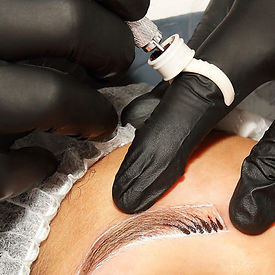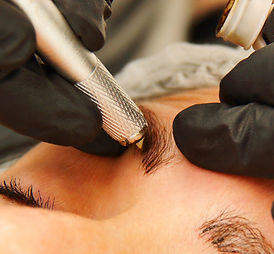
Microblading
Transform your eyebrows with our Microblading service, a semi-permanent cosmetic tattooing technique that creates natural-looking, fuller brows. Using a handheld tool with tiny needles, our certified technicians expertly craft hair-like strokes filled with pigment, lasting up to 18 months. Ideal for those with thin, sparse, or uneven brows, our personalized approach ensures your unique facial features are highlighted.
**What to Expect:**
1. **Consultation:** Discuss your desired outcome and assess your skin type.
2. **Design:** Customized brow shape and thickness are created.
3. **Numbing:** A topical anesthetic minimizes discomfort.
4. **Microblading:** Hair-like strokes are made and filled with pigment.
5. **Pigment Absorption:** The pigment is allowed to absorb for optimal results.
6. **Second Pass:** Ensures even distribution and a natural look.
7. **Aftercare:** Receive detailed care instructions for optimal healing.
**Contraindications:** Microblading may not be suitable for individuals with keloids, active skin infections, blood disorders, or oily skin. Consult with our technicians to explore alternative options if needed.
Experience the beauty of perfectly shaped brows—book your Microblading appointment at Kaviar Skin Studio today!

